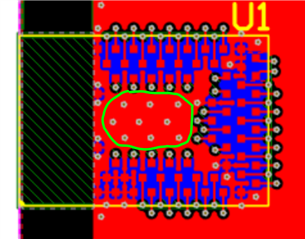Hi,
We have made a custom board based on BMD340 for a vital signs monitor. The board will be attached onto various parts of human body. The body shadowing effect plays an important role in the performance of wireless systems. This effect can lead to loss of packets or can even break the wireless link. In some of the designs we have made till date, we face this issue. Before going ahead with the design, we would love to make sure that BMD340 is the best option we have and we have not done any major mistake with respect to RFdesign.
To check for body shadowing effect, we performed a simple RSSI comparison test using NRF connect android app. We placed the BMD340 based design (PCB) on body as well as a Movesense device (with enclosure) on body and compared the both RSSIs reported by the app at various orientations. The values were monitored at the following scenarios at different distances
- Subject facing the phone (receiver)
- Subject facing away from the phone (receiver)
- Use BMD341 series with external antenna
- Use BMD345 series with external antenna and PA, LNA
- Use existing BMD340



